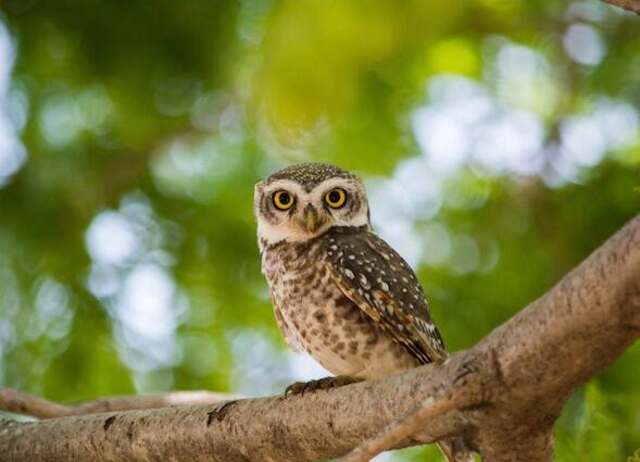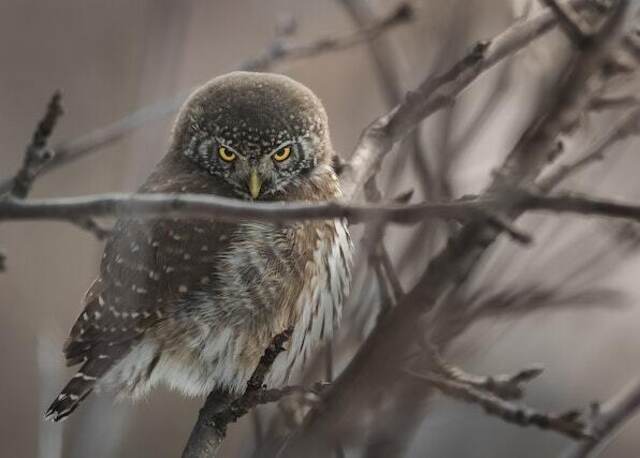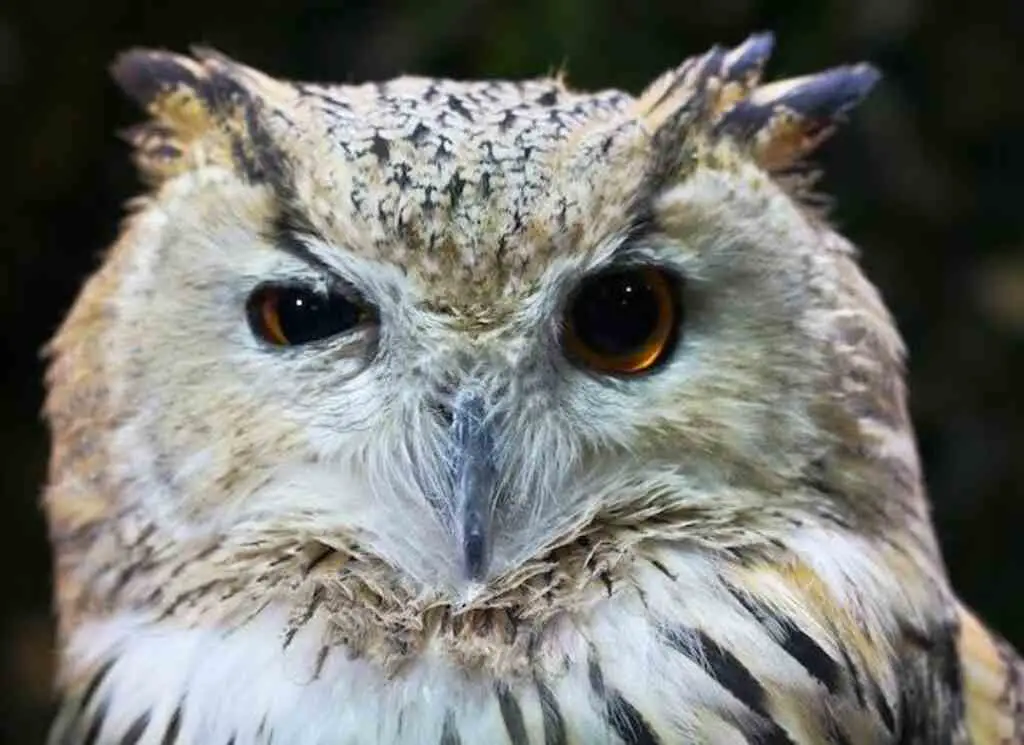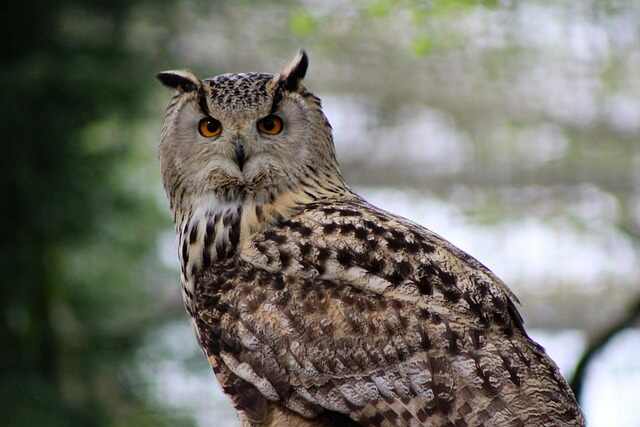Do owls sleep with their eyes open? Short answer: yes, but there’s more to it than that. Owls have fascinated humans for centuries with their silent flight, eerie hoots, and piercing stare. But what about their sleeping habits?
In this article, we’ll explore why owls keep their eyes open during sleep and the fascinating adaptations that allow them to do so. Get ready to enter the world of owl slumber!
Table of Contents
- 1 The Nocturnal Predator
- 2 Do Owls Sleep with Their Eyes Open?
- 3 Understanding Owl Eye Structure
- 4 Do Owls Really Sleep with Their Eyes Open?
- 5 Why Do Some Owls Keep One Eye Open While Sleeping?
- 6 How Do Owls Sleep?
- 7 Interesting Facts About Owl Sleep Habits
- 8 Conclusion
- 9 FAQs: Do Owls Sleep with Their Eyes Open?
- 10 Author
The Nocturnal Predator
Owls have long been known for their unique qualities. These birds of prey are distinguished by their large eyes, sharp talons, and the silent flight that makes them superior predators in the dark.
Their nocturnal nature has added to their mystique. As creatures of the night, they navigate through dense forests and hunt under the cover of darkness.
Do Owls Sleep with Their Eyes Open?
There is a common belief that owls sleep with one eye open. This theory has been popularized in children’s books and movies featuring these wise creatures.
But is there any truth to this myth? Owls are known for their remarkable eyesight, which allows them to spot prey from great distances in low light conditions.
To support such visual acuity, they have evolved specialized eyes that are larger than other birds’ eyes relative to their body size. They also have tube-shaped eyes that give them a wider field of vision than humans or most other mammals can achieve.

Understanding Owl Eye Structure
To answer whether owls sleep with their eyes open or closed, it’s important to understand how owl eye structures differ from human and other animal eyes.
Owls have two eyelids per eye – one upper eyelid and one lower eyelid – just like humans do. However, unlike humans who close both eyelids at once when sleeping, owls can close each eyelid independently.
When an owl is sleeping during the day or resting quietly at night, it may partially cover its eye(s) with the lower lid while leaving the upper lid raised slightly as a sort of built-in sunshade against bright light or wind (much like how we squint on sunny days).
This gives it an appearance of having one eye open, which has led to the idea that owls sleep with one eye open.
Do Owls Really Sleep with Their Eyes Open?
For centuries, owls have captivated people’s imaginations as fascinating creatures. One of the most intriguing things about owls is the idea that they sleep with their eyes open.
While it is true that some owls do sleep with one eye open, this behavior is not universal among all owl species. One reason why owls are able to keep one eye open while sleeping is due to the structure of their eyes.
Unlike humans and many other animals, owls have large round eyes that are fixed in place instead of being able to move around in their sockets.
Additionally, their eyes are much larger than those of other birds relative to their body size, which gives them excellent nighttime vision but also presents certain challenges when it comes to sleeping.
Another reason why some people believe that owls sleep with their eyes open is because they can close one eye at a time while sleeping.
This allows them to remain vigilant even when asleep, which is particularly important for nocturnal owl species that are active at night when predators may be present.
By keeping one eye open and one eye closed, an owl can rest and still be aware of its surroundings. There are also owl species that have been observed sleeping with both eyes closed.
For example, the great horned owl and the snowy owl both typically close both eyes while sleeping.
However, it’s worth noting that even these owls may occasionally keep one eye open if they feel threatened or need to remain alert for any reason.
While it’s true that some owls do sleep with one eye open, this behavior isn’t universal among all species.
Owls’ unique anatomy allows them to keep an eye on their surroundings even while asleep, but there are times when they fully close both of their big beautiful eyes!

Why Do Some Owls Keep One Eye Open While Sleeping?
How Keeping One Eye Open Allows Owls to Remain Vigilant and Aware of Their Surroundings Even While Asleep
Owls have developed the unique ability to keep one eye open while sleeping, which allows them to remain vigilant and aware of their surroundings even while they rest.
This is possible due to the structure of their eyes, which are much larger than those of most other birds and are positioned at the front of their skull instead of on the sides.
By keeping one eye open, owls can detect any potential threats or prey that may come into their field of view, even while they sleep.
This is particularly important for nocturnal owl species that are active at night, when predators may be present.
By remaining alert even while asleep, owls can better protect themselves from danger and stay on the lookout for opportunities to hunt.
Discussion on How This Behavior Is More Common in Nocturnal Owl Species That Are Active at Night When Predators May Be Present
The behavior of keeping one eye open while sleeping is more common in nocturnal owl species that are active at night, when predators may be present. These nocturnal owls include species such as the barn owl, great horned owl, and snowy owl.
These owls have adapted this behavior as a survival mechanism, allowing them to remain alert throughout the night despite being vulnerable while they rest.
Keeping one eye open also allows them to conserve energy by not having to fully awaken in order to assess potential dangers.
In addition, some studies suggest that keeping one eye open during sleep may also help regulate brain activity during periods of restful sleep for these nocturnal creatures who are awake during nighttime hours.
Overall, this unique adaptation demonstrates how owls have evolved over time to survive in a wide variety of different environments and circumstances.

How Do Owls Sleep?
Owls are known for their unique sleeping habits and positions. Unlike humans, owls can rotate their necks up to 270 degrees, allowing them to sleep in various positions without disrupting their breathing.
Some owl species prefer to sleep while perched on a branch or other object, while others prefer to sleep on the ground. Additionally, some owls will sleep with their heads tucked under their wings, while others will simply close their eyes and doze off.
One interesting behavior observed in some owl species is called “daytime roosting“. This occurs when an owl chooses to rest during the day instead of sleeping at night like most other owls.
Daytime roosting is commonly observed in burrowing owls and some species of screech owls. When daytime roosting, the owl will typically find a place to hide, such as a hole in a tree or underground burrow.
This behavior is thought to protect the owl from predators that are more active during daylight hours. Another fascinating aspect of owl sleeping habits is the fact that some species have been observed sleeping with one eye open.
As mentioned earlier in this article, this behavior allows the owl to remain vigilant even when asleep and helps protect it from potential predators. However, not all owls exhibit this behavior and it varies depending on the species.
Explanation of how some owls roost during the day instead of sleeping
As mentioned before, daytime roosting is an interesting habit exhibited by certain types of owls. Typically, these birds choose to rest during daylight hours because they are nocturnal creatures who hunt at night when prey is more abundant.
Daytime roosting allows them to conserve energy and prepare for nighttime hunting. Burrowing owls are one of the most notable examples of daytime roosters among North American raptors.
These tiny owls can be found living in underground burrows during the day and emerge at dusk to hunt for food. They are capable of digging their own burrows or using existing burrows created by prairie dogs or other small animals.
Overview of the different sleeping positions and habits observed in various owl species
In addition to daytime roosting, owls exhibit a wide variety of sleeping positions and habits depending on their species. For example, some owls prefer to sleep while perched on a branch with one foot tucked up close to their body, while others will sleep with their heads tucked under their wings.
Some species even sleep standing up, using a technique called “unihemispheric slow-wave sleep“. This allows them to rest one half of their brain at a time, while the other half remains alert for potential danger.
Overall, owl sleeping habits are fascinating and unique. From daytime roosting to sleeping with one eye open, these birds have adapted many strategies for survival in the wild.

Interesting Facts About Owl Sleep Habits
The Burrowing Owl’s Unique Sleep Habits
The burrowing owl, as its name suggests, prefers to sleep underground. It will often take over a burrow abandoned by another animal, or dig one out itself.
These owls are also known for sleeping in groups, with several individuals occupying the same burrow. During the breeding season, pairs of burrowing owls will even sleep in separate chambers within their shared burrow.
Snowy Owls and Standing Naps
Snowy owls are famous for their striking white feathers and piercing yellow eyes. What’s less well-known is that these arctic birds have a quirky habit of sleeping while standing up!
Snowy owls may perch on rocks or other elevated surfaces during the day and doze off while keeping an eye out for prey or predators. They can also tuck their beaks into their feathers to keep warm during particularly chilly naps.
The Long-Eared Owl’s Odd Sleeping Posture
Long-eared owls are known for their distinctive ear tufts and beautiful orange eyes. They’re also notable for their unusual sleeping posture – when roosting during the day, they’ll often lean forward onto their chest and rest their head on folded wings. This posture may help them conserve body heat while still remaining alert to potential threats.
Conclusion
While it’s true that many owl species do keep one eye open while sleeping (or appear to do so), there’s much more to these birds’ sleep habits than meets the eye!
From underground burrows to standing naps, different owl species have evolved unique ways of getting some shut-eye while staying safe from predators.
Whether you’re a bird enthusiast or just fascinated by nature’s weirdness, there’s always something new to learn about these amazing creatures.

FAQs: Do Owls Sleep with Their Eyes Open?
Do all species sleep with their eyes open?
Owls don’t have movable eyeballs like humans, so they can’t move their eyes even when awake. They sleep with their eyes closed or partially closed, which allows them to be aware of their surroundings and alert to potential threats. However, some owls, such as the Snowy Owl, may completely close their eyes while sleeping to protect them from bright light or other environmental stimuli.
How long do all sleep each day?
The amount of sleep that owls need varies depending on their species and age, but on average, most owl species sleep for around 12–14 hours each day. However, some owl species, like the Burrowing Owl, may only sleep for around 6 hours per day, while others, like the Great Horned Owl, may sleep for up to 20 hours per day.
Why do some owls sleep with their eyes open?
Owls sleep with their eyes open because they don’t have moveable eyeballs like humans do. By keeping their eyes open, they can still be aware of their surroundings and alert to any potential threats.
How do you know if an owl is sleeping?
Owls that are sleeping will be completely still and quiet, with their eyes either closed or partially open. They may also be perched on one foot with their head tucked into their feathers.
Can owls sleep during the day?
Yes, owls can sleep during the day. Owls are nocturnal creatures, but they may also rest during the day if they have not been able to sleep during the night.
Do baby owls sleep with their eyes open?
Yes, baby owls also sleep with their eyes open. They do this to stay aware of their surroundings and to protect themselves from potential predators.
Do owls ever sleep on the ground?
Owls may sleep on the ground if they are injured or sick. However, this is not common behavior for healthy owls, as it makes them vulnerable to predators.




